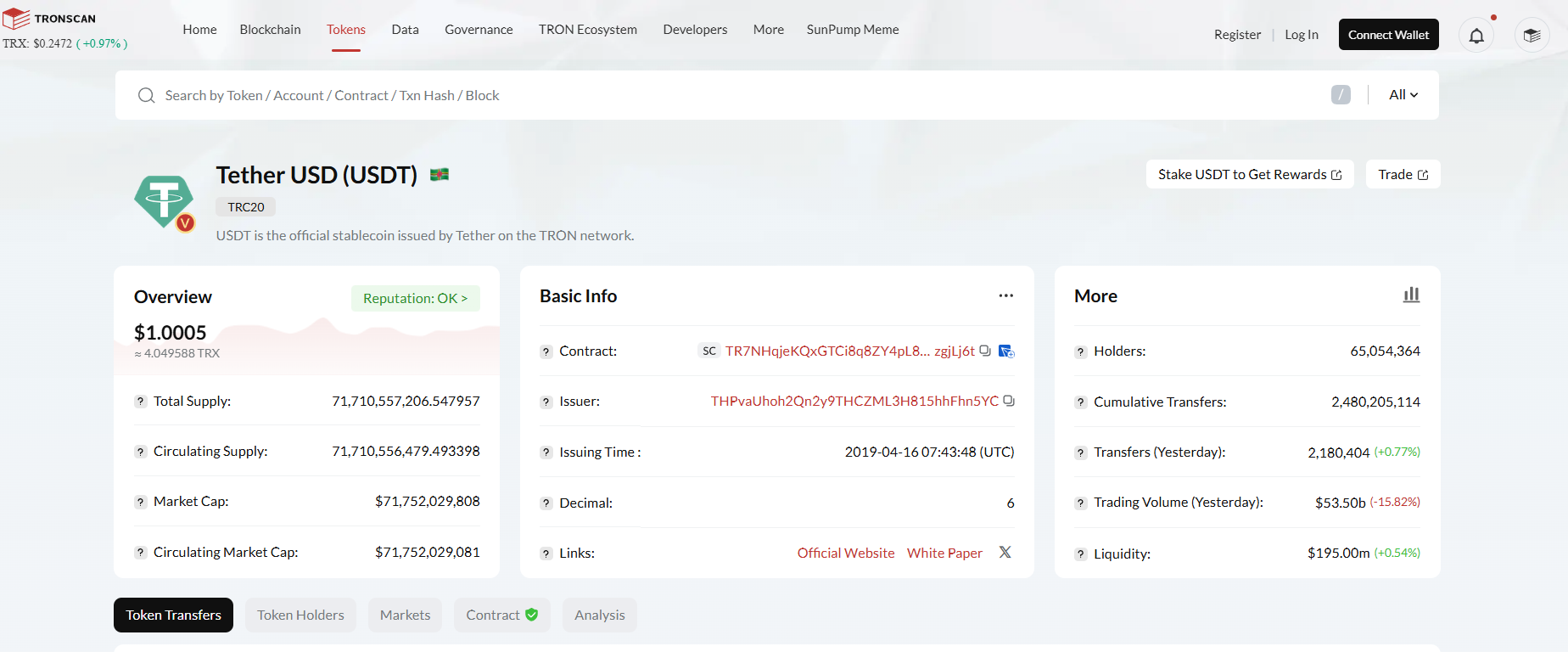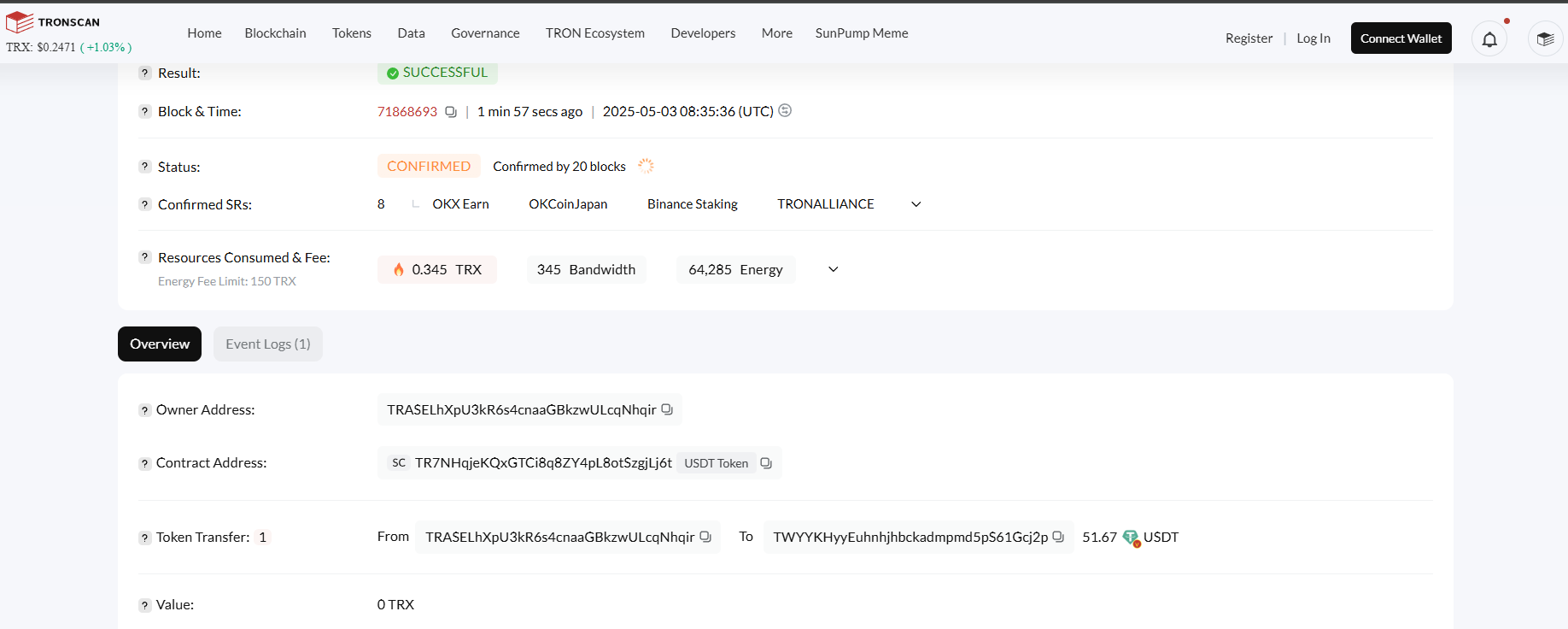What to Do If You Sent USDT to the Wrong Address
It's not just Tron blockchain newcomers who make mistakes related to entering the wrong address when transferring USDT TRC-20. Even experienced and active users make errors. The result of such mistakes can be the irreversible loss of funds.
There's no ill will involved – this is how the decentralized blockchain model works. Due to its irreversibility, a successful transaction cannot be canceled or reversed. Sending funds to an incorrectly specified address is not recognized by the system as an erroneous transaction.

Therefore, if the funds have been sent, recovering them is difficult, and sometimes impossible. Let's analyze if there's a chance to recover the funds and provide recommendations on how to prevent such an error.
Is It Possible to Recover USDT If Sent to the Wrong Address?
The possibility of recovering USDT sent to the wrong address depends on the type of error.
- If the address exists (e.g., a real person's wallet whose details you entered by mistake) – USDT can only be recovered with the owner's consent.
- If you made a mistake while manually entering this long string of numbers and letters, and such an address does not exist – the transaction simply won't go through, and the funds will remain with the sender.
- If, when transferring to an exchange, you entered the address without a MEMO or Tag (identifier for a specific wallet) – the funds will get stuck, but there's a chance to recover them through the exchange's technical support. In this case, the sender will not receive a quick response to the transaction – and this is a reason to start checking.
Conclusion. In most cases, when transferring USDT to an incorrectly specified or incomplete address, recovering the funds is very difficult.
What to Do If You Sent USDT to Someone Else's Wallet?
First of all, register on TronScan if you haven't already. This unique blockchain explorer will be useful to you more than once, and registration will help you better understand the service's features. This is not a mandatory requirement; you can use the service without registration, as all blockchain data is publicly available. It's just more convenient to learn the ecosystem itself through TronScan, as well as quickly find necessary information.
This explorer is intended not only for tracking transactions and checking smart contracts but also for analyzing the operation of the entire eco-platform.
To find out the status of a sent but unanswered transaction, you should check the recipient. To do this:
- go to TronScan;
- find the TxID (transaction identifier) – this is a unique transaction hash generated using a cryptographic algorithm based on the information contained in the transaction;
- enter the transaction hash into the search bar, press Enter;
- after the page with detailed information opens (transfer amount, its status, sender, and recipient), see who owns this address;
- if the address owner is associated with an exchange, contact technical support;
- if it's someone's personal wallet, try contacting the owner, but this rarely helps.

Many unscrupulous blockchain participants take advantage of other users' carelessness by creating exact copies of phishing services. A difference of just one character is enough – for example, instead of netts.io, you might accidentally go to, say, metts.io (a fake URL) and see a familiar design, form, personal account, etc. The redirection might happen due to a simple typo or through a malicious website. Any transfer made on such a service will be carried out without the knowledge of the original, copied site. Scammers might use fake "verified" accounts on social media to lure you to such a site. Of course, after such a transfer, no one will return your crypto, so be careful.
Conclusion. If the recipient of USDT sent to the wrong address is a private individual, the chances of recovering the funds are practically zero.
What to Do If You Sent USDT to an Exchange Without a MEMO?
Some exchanges require specifying a TAG or MEMO (identifier) for USDT deposits. Cryptocurrency exchanges and other blockchains may use shared addresses for transfers. Special identifiers (Destination Tag or MEMO) in the form of a series of numbers and letters are entered into a separate field to distinguish the addresses of specific users who might "share" one common wallet.
If the USDT sender did not specify a MEMO, the funds will arrive at the exchange's general wallet but will not be credited to the account of the intended recipient.

How to Recover USDT If You Didn't Specify a MEMO
The starting point is the same as in all cases of specifying the wrong transaction address:
- go to TronScan;
- find the TxID;
- contact the exchange's support and explain the situation.
The exchange may require confirmation of the sender's identity and return the funds. Be prepared that you might have to pay a commission to the exchange for the search and reverse transfer.
Conclusion. If the sender of stablecoins to an exchange forgot to specify the Tag or MEMO, there is a chance the exchange will return the USDT, but the process may take time and require additional costs in the form of an exchange commission.
How to Avoid Such Mistakes?
Even if you are transferring USDT to addresses you frequently send to, and you usually don't make mistakes entering the address line, don't rush the transaction until you have checked all the details.
The following actions, which we recommend performing without fail, will help prevent the irreversible loss of funds:
- triple-check the address before sending if it's entered manually;
- if preparing a transfer to an exchange – carefully review the exchange's policy if you are doing this for the first time;
- ensure the MEMO is specified if required;
- use the saved addresses feature in your wallet to avoid manual entry, where errors are most easily made;
- but regardless of the address entry method, don't limit your check to only the first and last 3-4 characters – scammers are always active;
- check the recipient's network: TRC-20 ≠ ERC-20 ≠ BEP-20; an erroneous transfer between different networks can lead to loss of funds;
- thoroughly check the URLs of the services used and their account names on social media.
So, let's draw conclusions from everything said above:
- If USDT went to the wrong address – it's almost impossible to get them back.
- If funds were sent to an exchange without specifying a MEMO – there's a chance to recover them through customer support.
- The best way not to lose funds – meticulously double-check all addresses and accounts multiple times before sending.
As you can see, the techniques that help prevent losses are not complicated at all. They are based on attentiveness, patience, thoroughness, and control. All these qualities are also required when dealing with fiat currencies, and even more so with cryptocurrency tokens, due to the irreversibility of transfers on the blockchain.